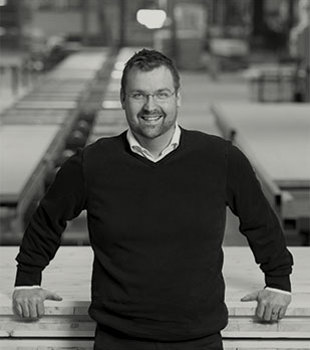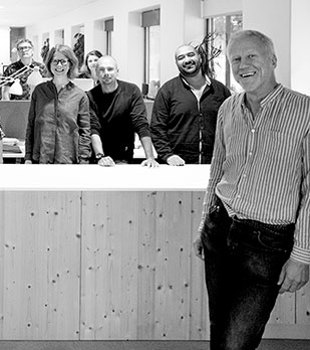We have a timeframe of 10 years to come up with global processes in solidarity with future generations. The greenest move would be not to build anything, but to go out and demonstrate for a better world – but that is hardly an option. So what should we do?
In the construction sector, the best thing for the climate is to build in wood, as shown in a study by IVL Swedish Environmental Research Institute, which calculated the greenhouse gas emissions of different construction choices for the building and operation of apartment blocks in Sweden. The result stands whether we include carbon storage in new forest or not. Lightweight beam and lightweight joist systems using wood, coupled with wood fibre insulation, are a sound option from both a resource and a climate perspective. As an architect, I decided long ago to only design buildings made primarily from wood and other plant-based materials. There is also no functional or economic reason to choose anything else.
The carbon dioxide bound up in construction materials must not be released into the atmosphere moving forward. How? By reusing and recycling both buildings and building components, preferably several times over, and then producing biocarbon (charcoal) or using bio-CCS (bio-carbon capture and storage) technology. Biocarbon, which is formed through combustion and pyrolysis of biological material, can bind carbon dioxide for thousands of years in the ground, where it stores nutrients and provides suitable structure for new plant growth. Alternatively, biocarbon can be used in applications such as water treatment or as a filler in concrete. If bio-CCS is given the right conditions to scale up the technology in an economically viable way, we might get the carbon sinks we need to keep global warming well below two degrees.
Build so recycling is possible. Studies show that recycling leads to resource savings and lower greenhouse gas emissions. Bear in mind that it is not always easy to return painted or treated wood products to a toxin-free ecocycle. New EU rules on waste will be implemented in Sweden by 2025, and this will affect the construction industry (read more at ccbuild.se).
We need to be resource-efficient in terms of both materials and energy/power. Energy efficiency should be on a par with well-built Passive Houses. Cutting peaks in energy demand will also be important in the future, since we risk power shortages in some regions.
Many chemicals are used in the construction industry, including ones that are new and unproven. Construction product databases contain information and assessment criteria for known chemicals. Pay particular attention to surface treatments, adhesives, fillers and so on. We should also be particularly careful about equipment related to building services. Read the safety data sheet for chemical products and avoid prohibited products that carry health risks and environmental hazards. From 2021, nanomaterials must also be reported.
Here’s to solidarity with the next generation!





























